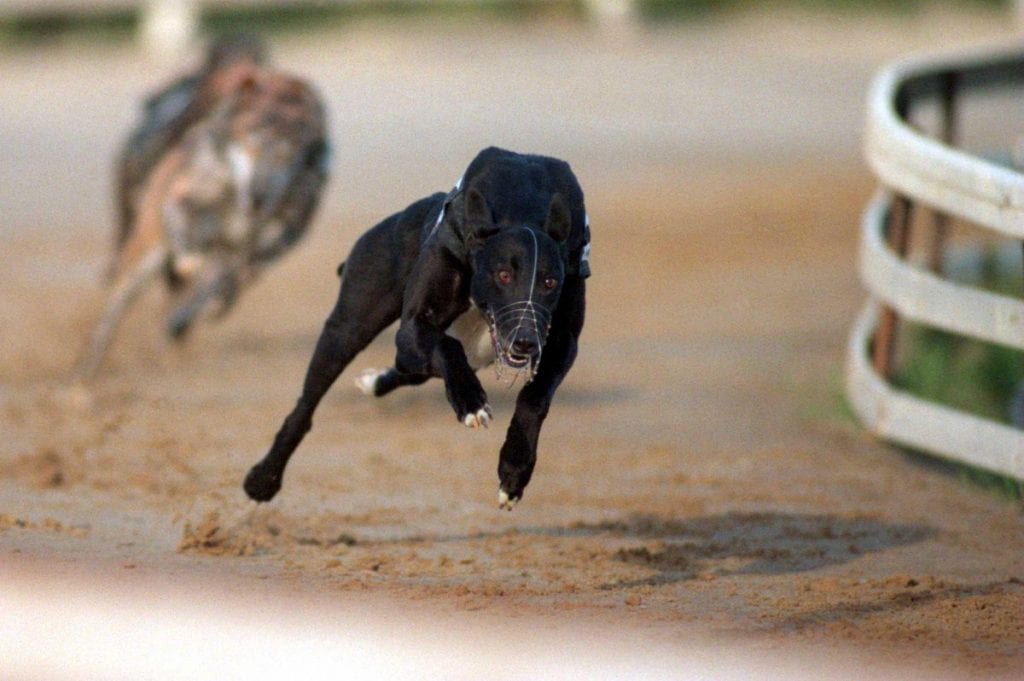The Greyhound Derby is a hugely prestigious race which is held on an annual basis, and it is considered to be the pinnacle of the sport. There are plenty of races on the calender which offer significant prize money for the winners, yet they all pale into insignificance compared to the Greyhound Derby.
The event began in 1927, and has been held at a number of different venues. Unfortunately, many tracks have been forced to close, and the race has been moved around several times in the last couple of years. In 2019, it will be competed at Nottingham. Previous stadiums to hold the race include Wimbledon, Towcester and White City.
The race is competed on a sand track, and is held over a distance of 500m, this is the standard distance for the majority of contests in the UK.
The first ever Greyhound Derby was won by Entry Badge with Mick the Miller becoming the first dog to clinch multiple titles in the event in 1929. No other dog achieved this feat until 1973. Whisper Wishes was the last dog to win at White City before it closed down.
Many trainers have been successful multiple times in the race with Charlie Lister securing seven winners in the prestigious summer event. He is often referred to as the ‘Derby King’ as a result of his achievements in this race.
Towcester staged two runnings of the Greyhound Derby before the Northamptonshire venue announced that it had gone into administration. The adjoining racetrack was also closed as a result. Dorotas Wildcat was the latest winner of the race for trainer Kevin Hutton.
The Greyhound Derby is always a hugely popular event as it gives fans the chance to see the UK’s finest dogs in one race. It is always packed full of drama, and many of the competitors will meet several times throughout the calendar year. Although the race itself is staged in June, there are a number of heats leading up to the contest.
The winner will receive £100,000 in prize money, whilst semi-final winners will each receive £2,500. There will also be smaller prizes for connections of those dogs who make it through the heats.
From a betting perspective, it is the most-punted event on the Greyhound Racing calendar with some bettors placing significant ante-post wagers on the race. Dogs who impress throughout the year are often touted as potential derby contenders.
The race attracts a significant number of entries with over 200 dogs often initially competing in the heats. These are eventually whittled down to just six.
There are also a number of other Greyhound Derbies which takes place in Scotland and Ireland. These are held at different times of the year.
When and Where?
The Greyhound Derby is competed in early June, and will be held at Nottingham on June 7th in 2019. The heats begin at the end of April, with the whole process held over a six-week period.
Dogs can be entered for the Greyhound Derby heats at any point during the calendar year.
Why is the Greyhound Derby so Popular?
Although interest in Greyhound Racing has waned in recent years, the sport still has a huge followed, and there are a number of fairweather fans who will always watch this race despite tuning in for other contests on the greyhound calendar.
For those lucky enough to visit the track, it is a hugely enjoyable night-out with a cracking atmosphere to boot. It also usually coincides with terrific weather.
Many greyhounds make a name for themselves throughout the year, and it is the perfect opportunity to see the cream of the crop in one place. Six speedy contenders will be on display, and they will be accompanied by a high-quality card.
For punters, it is a chance to enjoy a quick fix with a 1/6 chance of finding the winner. Greyhound punters are a very savvy bunch, and those who have watched all of the heats enjoy the chance to flex their betting muscles on this outstanding contest.
What Betting Opportunities are Available?
There are many betting opportunities available for the Greyhound Derby. As well as betting on the race itself, there will be round-by-round betting on each of the heats.
The ante-post market is available throughout the year, and many bookies will have a large field of runners priced up on their website for around 11 months of the year.
Key Betting Markets
To Win the Race – This is the simplest market available. Punters are able to predict which one of the six runners is going to win the Greyhound Derby and land a significant prize pot for connections. This market will be available once the line-up has been established.
To Win the Race (Ante-Post) – This is the same market as above, but it allows bettors to place a bet on the race months in advance. The options are numerous, but one-by-one they will be eliminated from calculations. Sometimes dogs are taken out of the betting due to injury or unexpected retirement, whilst the majority of competitors will have to be defeated in the heats before they can be removed from the market.
Each Way Betting / To Place (Betting Exchanges Only) – This is a chance for punters to select a dog which they believe will finish in the top two places. In a six-dog event, most of the entrants will be priced up somewhere between 7/4 and 5/1, however outsiders can often drift pre-race, and this provides the opportunity to grab some each-way value. These are usually paid out at 1/4 odds. The Greyhound Derby itself rarely produces big-priced winners, but there is plenty of scope for an each-way bet during the heats. These do have the tendency to throw up some surprises.
Each Way Betting (Ante Post) – The market is huge during the first couple of months of the year, and any half-decent greyhound tends to get added to the betting. Bookmakers will pay out 1/4 of the odds for your selected greyhound to make the final. So if you find a dog at 200/1, and you believe it has an outside chance of making it to the final six, it might be a worth a second look on the each-way market.
Match Bet – Not every bookmaker will offer this market, but many operators will have match-bets. This allows punters to wager on the outcome of a head-to-head between two of the chosen competitors. For example – Trap 1 to beat Trap 2. This is a good way of taking the winner out of the equation. If the red jacket finishes ahead of the blue, you will be paid out, even if they come 5th and 6th respectively.
Bobby’s Big Betting Tips for the Greyhound Derby
Trap Selection Could be Key – Each of the greyhounds will be allocated a different trap for the big race, and this could greatly affect their chances of success. With marginal distances between all six competitors, it sounds like it wouldn’t make much difference, but it is absolutely vital!
Some dogs prefer being drawn on the inside, and those with early pace in trap 1 can often get ahead early doors and avoid any trouble around the first couple of bends.
Others do their best work from traps 3 and 4, and tend to come on strong in the closing stages down the centre of the track.
Each track will have a slight bias towards a particular trap, and this is always worth considering. Occasionally wider tracks can benefit trap as there is more space to run into, and therefore it has a better chance of avoiding trouble. However, this also gives it the temptation to stray away from the other dogs, and can sometimes result in it losing its position.
Some greyhounds will have a positive record from their favoured trap, and if they are lucky enough to be allocated this number for the big race, it could make all the difference.
Form in Big Races – Generally speaking, all six dogs will have brilliant records in big races. They will have come through a number of testing heats in order to book their place in the Greyhound Derby, but it is a different story in the heats. Most entrants will have features in high-quality open races throughout the season, but some have the habit of blundering the start, or failing to ignite on the big occasion. You need to look for dogs who will put in a performance.
Split Times – The Racing Post are just one of many websites who offer a breakdown of each Greyhounds speed figures. Each race is timed, and ‘Split’ times will indicate how long a dog took to get to the finish line for the first time. This will give punters an idea of whether a dog tends to start quickly or takes a more laid back approach to the early stages.
It’s true that some greyhounds do their best work late on, but I’d always prefer to back a dog that starts strongly, and takes up a decent position towards the front of the pack. The lower the split time, the stronger start it tends to make.
Trainer Record/Form – Some trainers just have the knack of producing winners. There are a litany of handlers who would love to bag the significant cash prize, but very few are able to ever train a Greyhound Derby winner. Look for those who have a decent record in the race, and those who know what it takes to train a winner in this race.
Track Form – This wasn’t such an issue when the Greyhound Derby was staged at one venue, but as it has moved around over the last couple of years, this has become more significant. Look for those who have shown a liking to the Nottingham track, and have previous winning at the venue (outside of the heats)
The Greyhound Derby is broadcast on Racing Post Greyhound TV (RPGTV) each year, which can be accessed online.
















